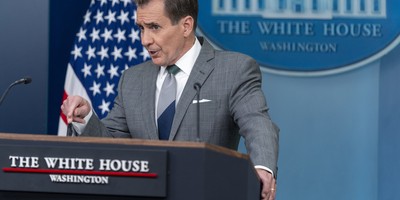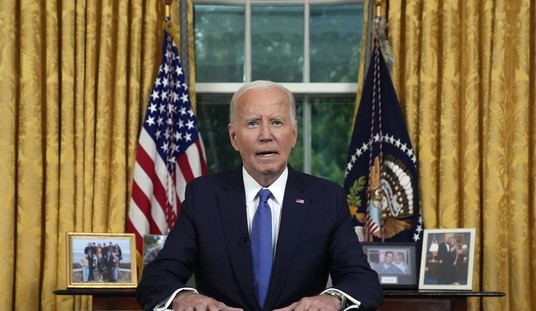Hello, 2017. Almost four years have passed -- four years filled with the Kim regime's usual threat, paranoid belligerence and murder, along with trial and error missile testing.
In his 2017 New Year's Day message, the rotund Kim announced his country is on the verge of fielding an intercontinental ballistic missile. According to Kim, "We have reached the final stage in preparations to test-launch an intercontinental ballistic missile."
In 2016, North Korea conducted 20 missile tests -- despite international economic and political sanctions forbidding the missile tests. At least two of the missile tests demonstrated that North Korea was extending the range of its boosters. The February 2016 test suggested that North Korea was on the verge of developing a missile that could carry a 1,300-pound warhead some 7,000 miles.
Similar stiff sanctions regimens have likewise failed to deter North Korea's nuclear weapons program. In September 2016, Pyongyang tested a nuclear device that had a yield between 10 and 20 kilotons. The blast was far and away North Korea's most successful nuclear weapons test. By way of comparison, the Hiroshima bomb had a yield of 15 kilotons.
North Korea has yet to prove it can master the complex trick of mating a ballistic missile with a nuclear warhead that will work as it makes the high-speed plunge towards its target.
Recommended
Many experts doubt that North Korea can put a working nuclear warhead on its shorter range Rodong ballistic missiles. However, the Rodong can easily strike South Korea and Japan. North Korea possesses intermediate range ballistic missiles (IRBMs) that can reach the U.S. territory of Guam.
Let's return to the 2013 target display. In 2017, Honolulu is within North Korean missile range. A souped-up IRBM might hit Los Angeles. Field an ICBM and the range fan approaches Austin and Washington. Both cities are about 7,000 air miles from North Korea.
There has been an unfortunate tendency in some media outlets to dismiss North Korea's ballistic missile and nuclear weapons program as a bluff. These outlets tend to be populated by the "Never Star Wars" crowd -- trapped-in-sap left-liberals who scorn U.S. missile defense programs as a Ronald Reagan fantasy and a waste of money. This is the crowd that believed Bill Clinton and Jimmy Carter's 1994 "Agreed Framework" deal with Pyongyang would end North Korea's nuclear quest. This same bleating menagerie applauded when the Nobel committee awarded Jimmy Carter its 2002 Nobel Peace Prize, in part for Carter's role in negotiating the 1994 nuclear non-proliferation agreement with North Korea.
With malice aforethought, North Korea violated the Clinton-Carter agreement.
Despite snark and scorn from the Never Star Wars, the U.S. military continued to pursue defensive anti-ballistic missile systems. U.S. Navy and Japanese Aegis ships deploy Standard missiles with ABM capabilities. A Terminal High Altitude Area Defense (THAAD) battery defends Guam. Despite intense Chinese objections, South Korea will deploy THAAD. South Korea intends to acquire ABMs for its Aegis ships. Japan and South Korea both field Patriot PAC-3 short-range ABMs.
I have just described three "layers" of missile defense -- short (Patriot), medium (THAAD) and longer (Aegis missiles). The U.S. has a very limited number of long ranged Ground-based Mid-course Defense (GMD) missiles in Alaska and California.
This is a thin shield. Given that diplomacy has consistently failed to stop North Korea's strategic weapons program, the missile defense shield must be expanded and strengthened. Never Star Wars snark provides neither deterrence nor defense.

























Join the conversation as a VIP Member